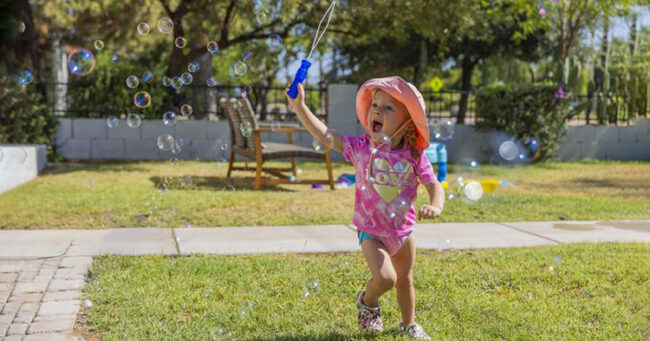In Arizona, water is a part of everyday life. Pools, splash pads, bathtubs and even buckets can pose serious risks to babies and young children. Drowning is the leading cause of death for children ages 1 to 4 in the U.S.—and Arizona’s rate is nearly double the national average. But with a few simple precautions, many of these tragedies can be prevented.
Whether at home or visiting friends, water safety is a daily priority for families with young kids. Here’s what every caregiver should know.
The ABCs of Water Safety
Shared by the Drowning Prevention Coalition of Arizona, the ABCs of water safety are an easy way to remember the basics:
A – Adult Supervision:
When it comes to water safety, the golden rule is simple: always have a sober adult keeping a watchful eye on children. No distractions, no multitasking—just undivided attention. Whether it’s a backyard pool or a bathtub, never leave children unattended near water, even for a moment.
B – Barrier:
Think of barriers as your child’s first line of defense against water hazards. Whether it’s a sturdy pool fence with a self-closing gate or a closed bathroom door, barriers help keep curious little ones out of harm’s way. Remember, a broken gate or an open door is not a barrier—it’s an invitation for trouble.
C – Classes & Coast Guard Approved Lifejackets:
If your child doesn’t know how to swim, a Coast Guard-approved lifejacket is a must-have accessory. Floaties may be fun, but they’re no substitute for a proper life vest. And while we’re on the subject of safety, why not make a splash with swimming lessons for everyone? Knowledge is power, and knowing how to swim could save a life. Don’t forget to brush up on CPR skills, too—it’s a life-saving skill every parent should have in their toolkit.
Supervise Always: Never allow children to play unsupervised in or around the pool area.
Empty anything with standing water: Including buckets, wading pools, coolers and pet bowls.
Install childproof devices: Don’t forget indoor safety with bathroom doors and toilet lids.
Life-saving Devices: Mount life-saving devices near the pool for quick emergency access.
Keep Clear: Keep tables, chairs, and ladders away from pool fences to prevent children from using them to climb over.
Check Access Points: Be mindful of access points like doggie doors that lead directly to the pool area.
Emergency Preparedness: Post your local emergency number near the pool and consider installing a phone nearby for immediate emergency access.
Water safety isn’t about being perfect—it’s about being prepared. With the right habits, gear and support, families can enjoy time around water while keeping their little ones safe.


